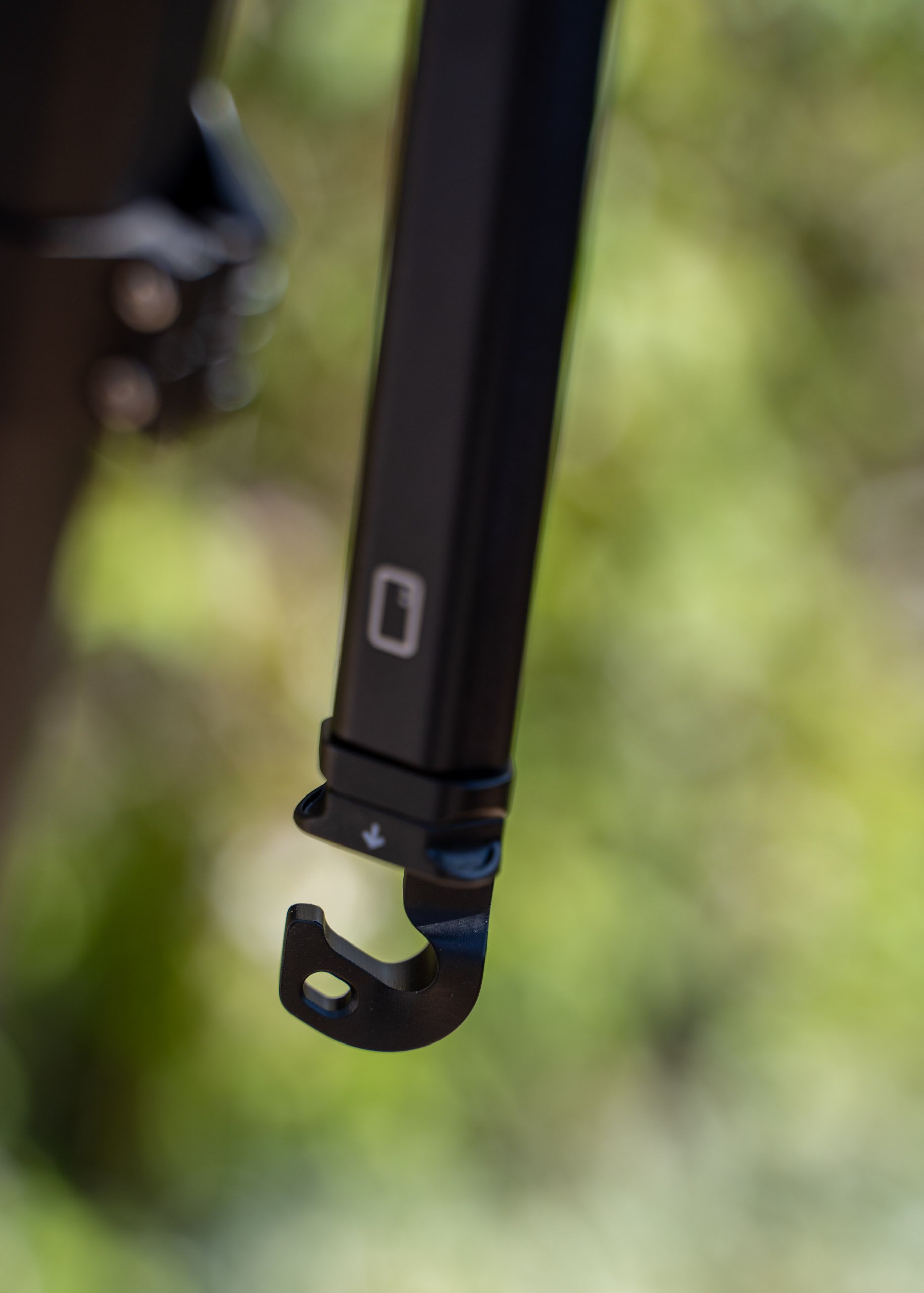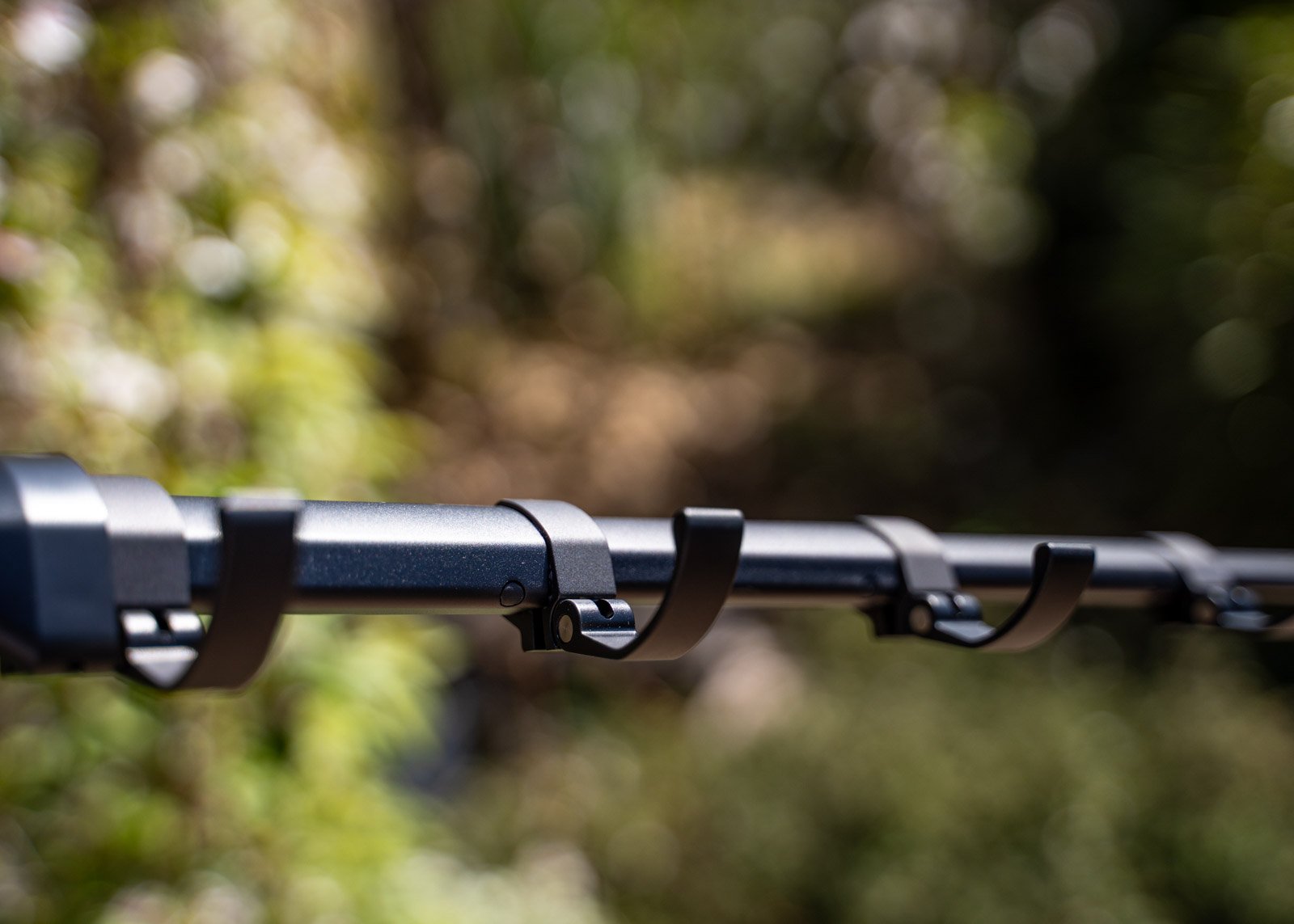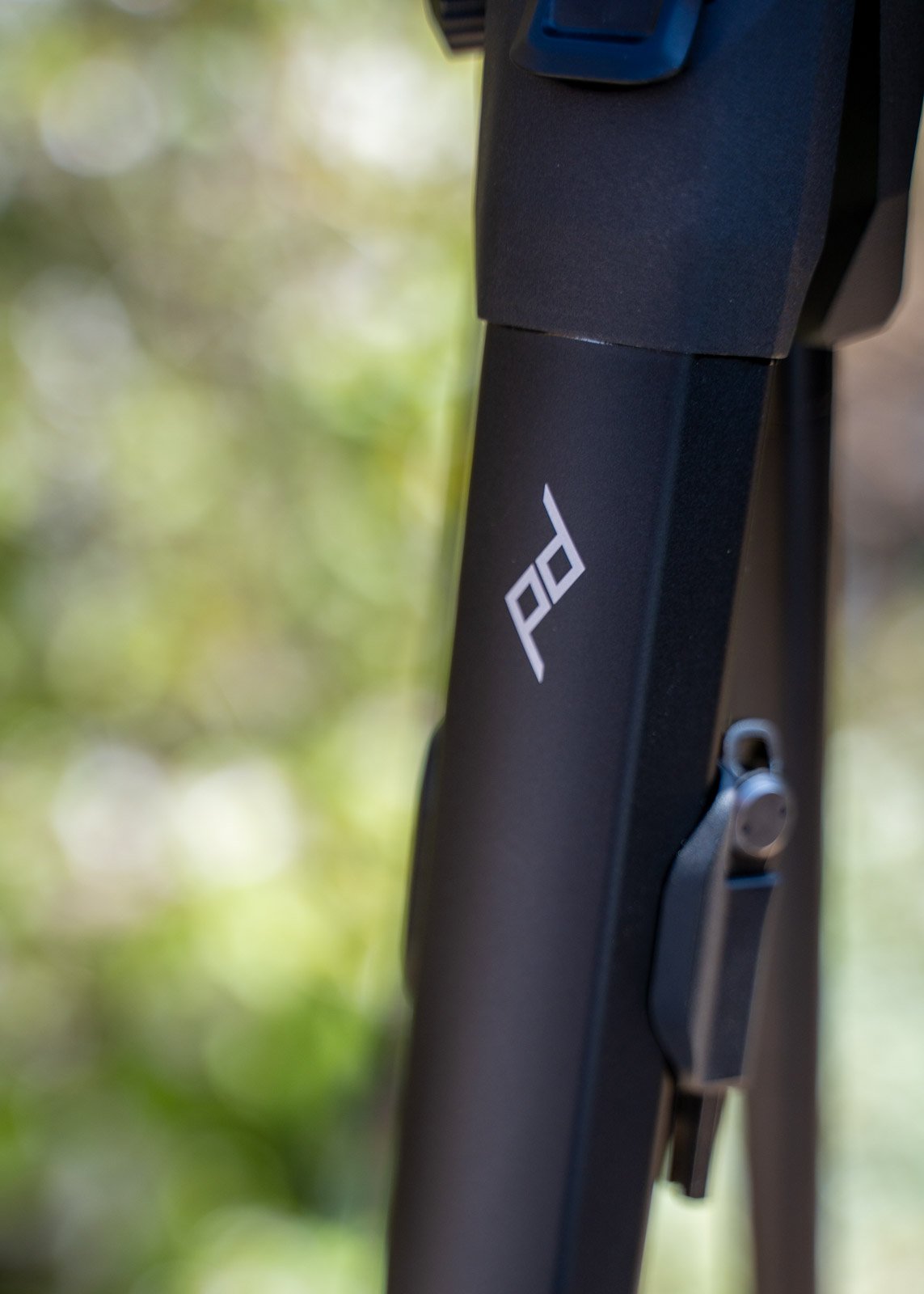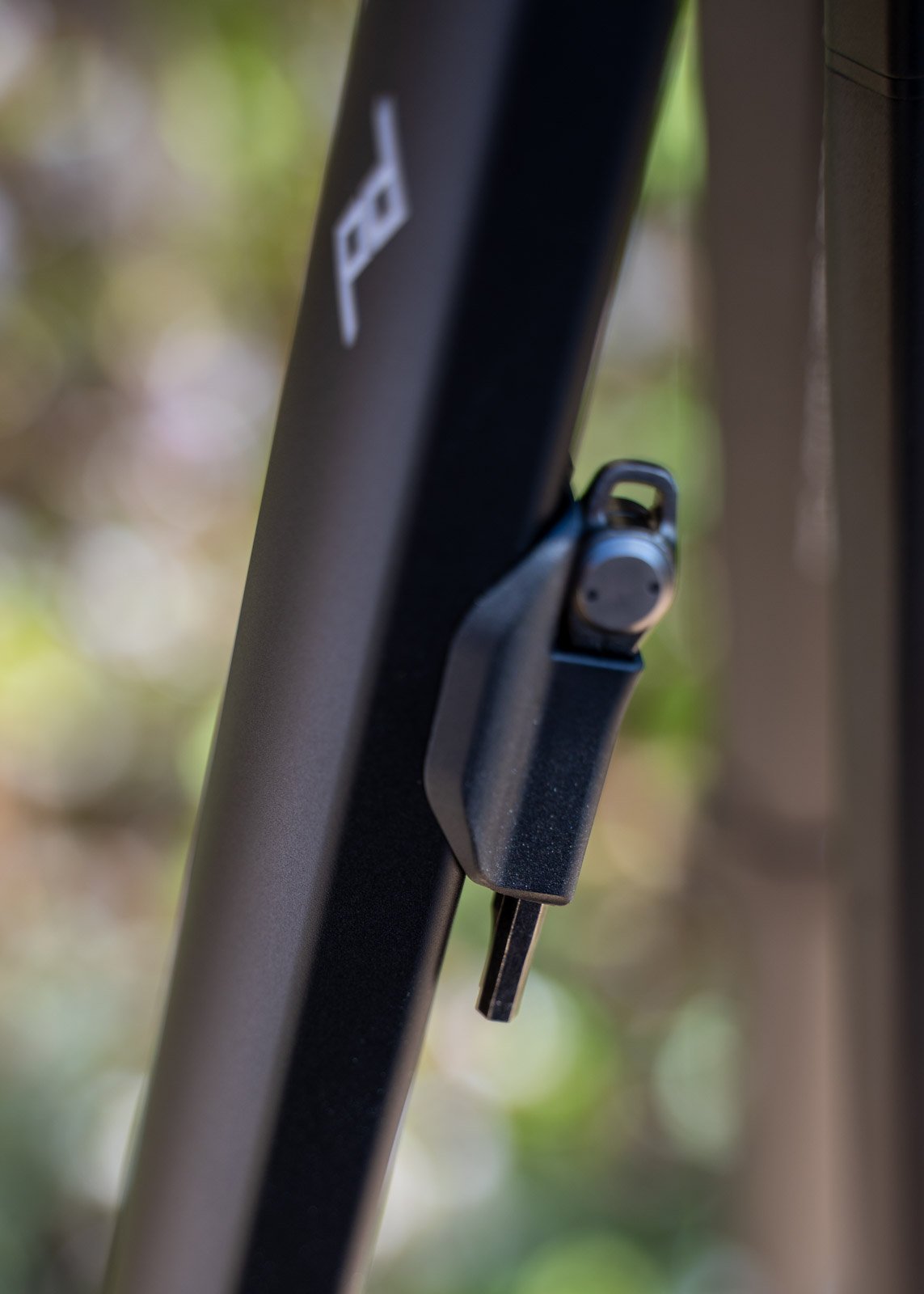Peak Design Travel Tripod: Small but mighty
If you’ve been doing photography for a little while there are a few things you tend have a collection of…Tripods is one for me. I have several tripods, but nothing seems to tick ALL the boxes. But it’s just possible this new Travel Tripod from Peak Design might do the trick.
Editor’s note: Peak Design sent me the Travel Tripod to review and keep. However, this is an independent review. All thoughts about this product are our own.
Peak Design spent four years reinventing a small, more compact, lightweight travel tripod that is still stable, durable, and, best of all, easy to use. Granted I don’t do that much travel photography, but even in the studio, I need something lightweight and sturdy, yet easy to use. The fact that it is tiny makes storage easy too.
Pros
Premium build and so small (roughly the size of a drink bottle)
Lightweight aluminium (but also comes in carbon fibre)
Buttery smooth operation, simple twist action ball head
Sturdy and stable
Easy to use clips and fasteners for people with weak hands like me
Cons
The bubble level is so small, I didn’t even notice it until it was pointed out. Also once the camera is on you can’t see it. Slightly larger in a better location may help?
Small (easily lost) head plate which needs to be attached with an Allen Key (provided) to your camera, the only fiddly bit on this tripod
No spikes on feet (again no biggy, but some may also prefer that, but they are available as an optional accessory)
PD Travel Tripod — Technical specifications
All technical specifications for the Peak Design Travel tripod have been taken from the product listing page on their website:
Load capacity: 20 lb / 9.1 kg
Max height: 60″ / 152.4 cm (column raised)
Min height: 5.5″ / 14 cm (low mode)
Closed length: 15.4″ / 39.1 cm
Closed Diameter: 3.125″ / 7.9 cm
Head mount type: Ball head Powder-coated aluminium
Weight: 3.44 lb / 1.56 kg
Materials: Aluminum alloy, or carbon fibre
Lock type: Aluminum cams Leg Locks, Polycarbonate/ABS blend
Leg sections: Five, Anodized Aluminium alloy
Feet features: Rubber
Tripod easily fits into the bottle pocket in the Peak Design 20L Backpack. Handy!
Peak Design Travel Tripod — Ergonomics and build quality
When you first get the Peak Design Travel Tripod it comes in a sturdy packing box and a nice neoprene travel bag. It’s small and mighty. The amazing design means the overall footprint of this tripod is roughly the size of a water bottle (7.9cm diameter). It actually fits in the Peak Design 20L backpack drink bottle pocket and there is a strap to keep it steady. Everything about this tripod says quality and durability.
Build quality
When the tripod is collapsed it has a length of 15.4 inches. That means this tripod should fit into any tripod pockets that are found on most camera bags. Indeed most water bottle pockets too. The legs have four sections, each of which is secured with a clip leg lock. When fully extended, the Travel Tripod stands a whopping 60 inches tall, with the middle column raised.
Everything about this tripod feels premium and solid. The aluminium used on the leg locks feels very sturdy. The locks themselves are smooth to clip and unclip and are easy to use. The legs fold out easily and can be positioned without fuss. I really struggle to use fiddly, tight clips and twists with my hands and these are a dream to use. The tripod comes with rubber feet installed, making it non-slip. It has a hook to hang your bag for added weight and it can be removed concealing a mount for a mobile phone.
It’s a dream setup with the ball head
I used the Peak Design Travel Tripod with the ball head in and out of the studio. There is one dial to lock and unlock the head and then you can move in any direction. The controls are silky smooth and easy to use (even with my hands). No more pesky knobs which are a pain to twist and turn. The head is easy to position, and with the lock mechanism, it’s easy to make sure it is straight. It also makes dropping the centre column into place a cinch too.
The mounting plate is easy to slide in and out of the tripod and there is a terrific twist lock that keeps everything in place. My only problem was putting the mounting plate on my camera, it is small and fiddly and requires a special hexagonal key (which is supplied) Even that key has a handy pocket on the tripod leg too. But once attached to your camera you don’t really need to remove it.
I was never concerned about the stability of this tripod. Still, if you feel the need to add more weight to the tripod you can clip your backpack to the handy clip on the bottom of the centre column. Remove that clip and you will find a hidden mobile phone mount adapter.
Peak Design Travel Tripod — The best tripod you’ll ever own
I’ve owned many tripods and have used some premium offerings. I have to say that the Peak Design Travel Tripod is up there with the best of them. The build quality is outstanding. The locks are easy to use. The legs extend easily and smoothly, it can hold a ton of weight, it has a tall maximum height yet still folds down into a teeny tiny compact unit.
It’s one of the lightest tripods out there 3.44 lbs and that includes the head. The carbon fibre version is even lighter (2.81lbs). That makes it super easy for travelling and carry.
The tripod isn’t exactly cheap at US $375.95 (AUD $609), but you’re getting a premium tripod. I will shortly see my Vanguard studio tripod and my Benro travel tripod retired. It’s that good. If you want a sturdy tripod that feels premium in every way, check out the Peak Design Travel Tripod. Available from B&H Photo.
Our verdict
Peak Design Travel Tripod
★★★★★5/5
This has to be the best tripod I have ever used. It’s small, lightweight and sturdy. But the best part is it’s easy to use. No pesky dials and twist locks that jam up. I really struggle with my hands and I find using this tripod in and out of the studio a dream.









